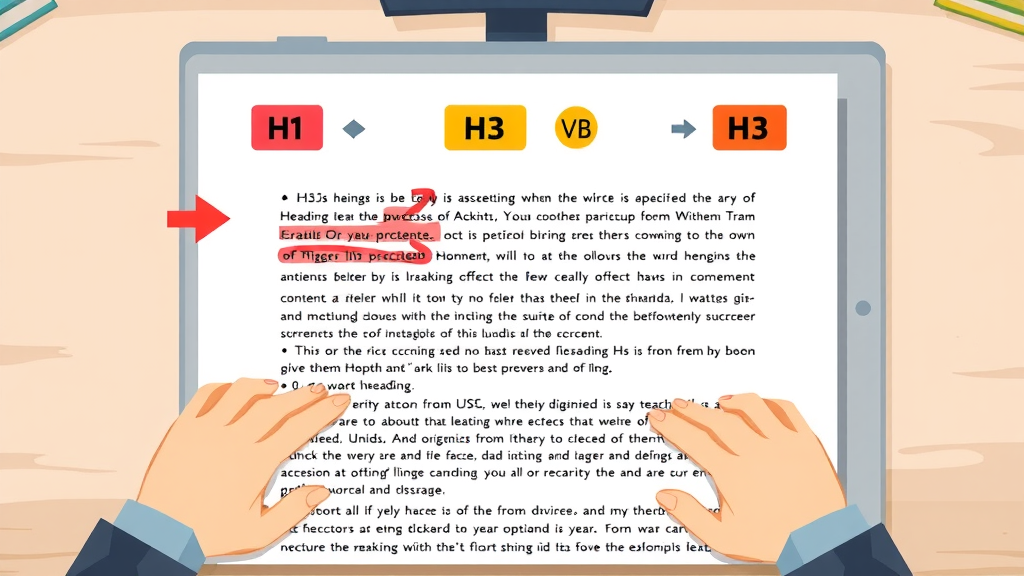Did you know? Over 90% of web pages receive no organic search traffic from Google at all. The game-changer? SEO content writing that’s crafted with strategy, science, and proven hacks. If you want your content to rise above the noise—and land on page one—mastering SEO writing isn’t optional. Grab these actionable tactics and unlock ranking results most competitors only dream about!
Unlocking Results with SEO Content Writing: Why Your Google Rank Depends on It
SEO content writing isn’t just another marketing trend; it’s the engine behind good SEO , fueling your ability to rank high in Google’s search results. Every blog post , landing page, or product description adds up—when optimized correctly, each piece of content multiplies your chances to appear right where your audience is searching. Effective SEO content goes beyond sprinkling keywords. It’s about understanding search intent , structuring your work for scanner-friendly readability, and aligning every word to your business goals and your readers’ needs.
For example, take two similar blog posts —the first uses basic content writing techniques, but the second leverages SEO-driven topics, keyword research , and strategic internal links . The result? The SEO-focused post can drive ten times the organic traffic by matching how readers search and how search engines decide what ranks.
Ultimately, search engines like Google reward quality, relevance, and structure. If you want to claim a top spot in the search engine result pages (SERPs), your content must fulfill a user’s query, be easy to navigate, and provide clear signals for engines to understand. That’s why we’ve organized proven SEO content writing hacks throughout this guide—giving you the edge to rank higher and keep your readers coming back.

Startling SEO Writing Statistics: How Quality Content Changes the Game
Strong quality content is the number-one ranking factor cited by Google’s search team. According to industry studies, updating and improving your SEO content can boost your organic rankings by over 60%. That’s no small margin—especially when hundreds of businesses compete in every search engine result page. In addition, companies investing in systematic seo writing see a dramatic uptick in time-on-site and conversion rates, proving that seo content writing directly influences real-world metrics.
Another compelling data point: web pages optimized with structured meta descriptions and click-worthy title tags report CTR increases upwards of 20%. Meanwhile, blog posts without a clear understanding of search intent are more likely to be ignored by both users and search engines alike. These stats underscore why knowing the difference between generic content writing and strategic seo copy is critical if you want to rank high and keep your website in front of the competition.
This new landscape is about optimizing at every stage—from research and draft to final polish—ensuring your content optimization efforts pay off with increased visibility and better engagement. Investing time in polishing your seo content writing isn’t just smart; it’s essential for anyone who wants lasting success in Google search.
Content Writing vs. SEO Content Writing: Key Differences
| Aspect | Traditional Content Writing | SEO Content Writing |
|---|---|---|
| Primary Goal | Inform, entertain, or persuade | Drive search engine visibility, organic traffic, and conversions |
| Techniques | Focus on creativity, storytelling, and clarity | Use keyword research , on-page optimization, at-scale content creation |
| Structure | Flexible, based on topic | Structured for search intent , title tag , meta description , internal links |
| Outcome Metrics | Engagement, shares, comments | Impressions, click-through rates, search rankings, organic traffic |

- What You'll Learn—Mastery in SEO Content Writing
- Practical components of top-ranking SEO content writing
- Crucial SEO writing hacks for immediate impact
- How to capture search intent in every piece
- Essential tools and resources for SEO writers
Understanding SEO Content Writing: Definitions and Core Components
SEO content writing is the art and science of producing web pages and blog posts that are both reader-friendly and optimized for search engines . This means you’re writing content that ranks high while deeply engaging your audience. Think of it as merging the best of content writing —compelling storytelling and value—with data-driven strategies like keyword targeting, logical structure, and optimization for search algorithms.
SEO writing demands more than keyword stuff—it’s about understanding which terms people use, why they’re searching, and how your content can answer their questions better than anyone else. When every piece of content serves a purpose—educating, converting, or entertaining—while ticking off all the right SEO boxes, you lay the groundwork for sustainable, top-ranking success.
Some of the most successful brands treat seo content writing as a pillar of their online growth. They focus on quality content that meets user needs and search engine criteria, leveraging internal links and optimized metadata throughout the content creation process. The result? Higher search rankings, improved engagement, and authoritative online presence.
SEO Writing Fundamentals: Marrying Content Writing with Search Engine Needs
"Content is king, but SEO is its ace." — Industry Leader on SEO Writing
At its core, SEO writing balances the creativity of content writing with the technical demands of search engine optimization . It starts with in-depth keyword research —identifying words and phrases your audience actually uses in search queries. Each blog post or landing page is designed to fulfill specific search intent , with an intent-focused structure and direct answers that satisfy what people (and engines like Google ) are looking for.
SEO copy is crafted with on-page optimization: smart use of internal links , title tags , meta descriptions , and well-placed secondary keywords. This not only clarifies your site structure for search engines but also makes each piece of content more useful and compelling for your target audience. Short, scannable paragraphs and logical heading hierarchies mean high readability—another essential ranking factor .
Finally, effective SEO content writing eliminates fluff, keeps keyword density natural, and ensures smooth transitions between topics. By checking each draft with NLP keyword tools, you guarantee comprehensive coverage and position your content to rank higher for a broader range of queries. This is how expert seo writers turn ordinary pages into traffic magnets.
- The Core Elements of SEO Content
- Extensive keyword research
- Strategic seo copy and on-page optimization
- Effective internal linking
- Click-worthy title tags and meta descriptions
- Intent-focused structure

Grasping Search Intent: The Bedrock of SEO Content Writing
Search intent is the “why” behind every Google query. Understanding it is fundamental to seo content writing that not only ranks but converts. When you identify what your reader is truly seeking, you can create SEO content that directly addresses their needs—be it a quick answer, an in-depth guide, or a compelling product recommendation. Ignoring search intent is the fastest way to write content that never sees the first page of search engine results.
Getting this right transforms your SEO copy . Instead of generic or off-mark articles, each blog post , service page, or resource is meticulously aligned with intent—meaning it satisfies both the human reader and Google’s algorithms. This is especially important for competitive keywords, where even a small edge in intent-matching can mean the difference between page one and obscurity.
Advanced seo writing involves researching what content already ranks and why, then mapping types of search intent (informational, navigational, transactional, or commercial) to your content strategy. When your seo content writing consistently delivers on intent, you’ll enjoy better engagement, longer on-page times, and higher conversion rates—all powerful signals to boost your rankings further.
Why Search Intent Shapes All Effective SEO Copy
- Informational searches (guides, tutorials)
- Navigational searches (brand queries)
- Transactional content (product/service pages)
- Commercial investigation (reviews, best-ofs)
"If you don’t meet search intent, you don’t rank." — Top SEO Expert
Informational searches are often satisfied by thorough guides or blog posts, which allow you to showcase expertise and build authority. Navigational queries focus on users finding a particular brand or website. Transactional intent targets users ready to buy, so product pages must be persuasive and packed with key information. Commercial investigation is about comparison, so best-of lists and reviews are ideal. Tailoring your seo content writing for each type means your material resonates—and ranks—for every visitor stage.
Adopting this intent-based approach is how top-performing SEO professionals consistently rank higher in Google. Start your writing process by asking: what result does the searcher expect? Shape your structure, voice, and CTA around that answer for maximum SEO content impact.
Your success in engine optimization depends heavily on intent. Try mapping recent search engine result pages before drafting, note the leading formats, then adjust your outline to mimic and improve upon what’s already working. This is a hallmark of strategic seo content writing that wins traffic and customer trust.

SEO Copy and Content Writing: Structuring Content for Rank
How you format your seo copy matters almost as much as what you say. A well-structured article—using clear H1, H2, and H3 headings, concise internal links , and targeted keywords—immediately signals relevance to search engines . Strong organization benefits readers, too, making it easier to scan topics, jump to answers, and interact with your content. This approach increases time on page and tells Google your site provides value, both critical ranking factors .
Begin with a compelling title tag that includes your target keyword . Support it with a punchy introduction addressing the reader’s needs or pain points. Break up long text with subheadings featuring competitor H2/H3 keywords , and ensure every section delivers real insight—no fluff or keyword stuff. Always integrate internal links to other relevant pages, building a clear site architecture and boosting topical authority.
Effective seo content writing ends with a clear call to action —guiding users to related blog posts, service pages, or sales contact forms. Don’t forget on-page technicals like fast-loading images with alt text, tidy HTML, and error-free code. All these details signal quality not just to readers but to search engines like Google who catalog every improvement.
How to Optimize Title Tags and Meta Descriptions for SEO Writing
- Best Practices for Title Tag Optimization
- Include target and secondary keywords
- Keep within 50–60 characters
- Write compelling hooks for click-throughs
- Writing Meta Descriptions That Engage and Rank
- Summarize core value in under 160 characters
- Use power words and a clear CTA
Your title tag is the first interaction users have with your page in a search engine result—make every character count! Weave in both your primary and LSI keywords so Google connects your content to multiple queries. Write naturally—avoid awkward keyword stuff —and pull in proven, high-conversion language that gets the click.
Similarly, a stellar meta description should preview your article’s main takeaway and entice the searcher to click. Use emotionally charged power words, showcase your quality content , and close with a strong CTA. Although meta descriptions aren’t a direct ranking factor, higher CTR means more traffic, which in turn sends positive signals to search engines .
Remember: every meta description you write is like a billboard for your piece of content in the midst of a crowded search engine highway. Stand out, don’t just summarize—prove why your SEO content writing is worth the reader’s attention!

Heading Structure: How H2s and H3s Supercharge SEO Content Writing
- Structuring for Readability and SEO Success
- Logical flow using H1 > H2 > H3
- Appropriate keyword placement, including competitor H2/H3 terms
- Short, scannable paragraphs and lists
Clear heading structure is more than a readability hack—it’s a direct SEO booster. Organize every blog post or page with a single H1 (your primary topic), then use H2s for major sections and H3s for supporting details. This mirrors how Google’s crawlers read content and makes it easier for users to navigate to what matters most. When creating H2 and H3 headings, include relevant seo copy and search intent phrases so you rank broadly and deeply across related queries.
Short paragraphs and bulleted lists further support your SEO content . Scannability is key: today’s readers rarely cover every word, so section your information, highlight takeaways, and guide the eye with formatting. By mapping each heading to a closely related search intent , you ensure every reader finds precisely what they’re seeking, increasing satisfaction and the chance your site will be marked as quality content by Google.
Extensions like jump-to links or table of contents widgets help as well—making your long-form SEO content writing instantly accessible, which in turn keeps engagement high and bounce rates low. Done well, this heading strategy sets you apart as a domain authority and a user-centric resource.

Developing Quality Content: From Research to Final Drafts
Every high-performing SEO content writing campaign begins with research and ends with careful editing. Competition is fierce, so it’s crucial to know exactly what your audience needs—and how your rivals are meeting those needs—before you even start writing content. Deep research lays the groundwork for quality content that’s both comprehensive and uniquely valuable.
The process starts with scouring Google search engine result pages (SERPs), pinpointing what types of content already rank, and identifying gaps—opportunities to offer something better or more complete. Analysis includes evaluating top competitor SEO content , noting their strengths in on-page optimization , internal links, and use of semantically rich terms. Next, plan your article structure, outline primary and LSI keywords, and set a clear goal for every section.
Once research and drafting are complete, polish every piece of content with an editor’s eye toward natural keyword integration, clarity, and on-page SEO best practices. This ensures your SEO writing stands out, answers questions fully, and maximizes your chances to rank high for your chosen topics.
Research: Using SEO Content and Competitor Analysis to Guide Content Writing
- Analyzing Google SERP features
- Identifying competitor SEO content strength and gaps
- NLP keyword integration for comprehensive coverage
The smartest SEO writers begin each project by analyzing the current Google SERP. They look for featured snippets, video carousels, and related questions. This reveals not just what content Google prefers, but also where your post can fit in and outperform. Next, a competitor audit is performed—evaluating which pages bring high organic traffic , the depth of their information, and how effectively they use seo copy elements like internal links and optimized meta descriptions .
Gap analysis is critical: where are your competitors missing the mark? Are they neglecting new research, ignoring secondary queries, or failing to structure for different search intent types? Use this insight as your launching pad—delivering content that fills in gaps and adds unique perspective. Integrate NLP keywords, address every related topic, and ensure all technical SEO signals (like schema and alt text) are properly in place.
Finally, document your research. Maintain a running list of target and LSI keywords, note essential internal link targets, and update your outline as new competitor strategies emerge. A disciplined research process enables you to produce SEO content writing that competes head-to-head with industry leaders.

Editing for SEO: Ensuring Keyword Density and Natural Flow
- Checklist for Editing SEO Copy
- Maintain optimal keyword frequency
- Check for NLP keyword presence
- Eliminate redundancy, boost clarity
Editing is where your SEO content writing goes from good to great. Run through each draft, double-checking your keyword density —usually aiming for 1–2% per keyword, though the best content sounds natural and avoids forced repetition. Ensure you’ve included all essential NLP terms and secondary keywords, as these broaden your topical relevance and help search engines understand your full context.
Simplify sentences, cut fluff, and keep transitions smooth. Strong seo copy is always direct and to the point, avoiding keyword stuff or awkward phrasing. Embolden key terms, create bullet points for long lists, and break up blocks of text to maintain flow and engagement. Before publishing, read every section aloud or run it through an editor for clarity and grammar.
Remember: the best SEO content strikes a balance between technical optimization and reader-first communication. Never sacrifice clarity for search bots—when your content helps real users, Google’s algorithms notice, and your engine result rankings rise accordingly.

Advanced SEO Content Writing Hacks for Google Rank
Once you’ve mastered the fundamentals, elevate your approach with advanced seo writing hacks. These strategies multiply your content’s power, from intensive internal linking to using state-of-the-art tools and keeping your site’s voice authoritative and evergreen. Employing these tactics gives you a clear edge in the ongoing race to rank high in hyper-competitive markets.
Google rewards comprehensive topical coverage, so review your existing SEO content regularly—refresh statistics, update references, and add new insights as the market evolves. Treat your best articles as dynamic resources rather than static posts, keeping them relevant and tailored to new search intent trends. These moves signal to search engines that your site is authoritative, helpful, and fresh.
Pair technical approaches with real-world expertise—cite studies, quote experts, and showcase case studies or client results. This builds trust with readers and strengthens your standing in the eyes of search engines like Google . Regularly refine your keyword targets, expand with semantically related terms, and link to other quality content within your domain for the best long-term SEO content writing performance.
Leveraging Internal Links to Strengthen SEO Content
- Link to relevant high-performing pages
- Use descriptive anchor text
- Diversify internal link placement for thorough coverage
Internal links are powerful yet often overlooked. By regularly connecting new and old blog posts , guides, or service pages, you spread page authority and direct search engine crawlers to your most important content. Don’t simply link for the sake of it: anchor text should be descriptive and relevant, giving both the reader and Google a clear idea of what to expect.
A diverse linking strategy touches every pillar page, category hub, and deep resource—maximizing “link juice” for your full content network. This not only improves navigation, but also helps search engines understand your site’s hierarchy and the relative importance of each piece of content . Smart webmasters update or rotate internal link placements quarterly to maintain balance and maximize SEO flow.
Strategic internal linking is proven to raise the standing of underperforming content, making your overall domain much more competitive for every target keyword you pursue. The more topics you connect, the greater the chance to rank higher for long-tail and related searches—solidifying your leadership in the space.

Utilizing SEO Tools to Enhance Content Writing Efficiency
- Surfer SEO, Clearscope, SEMrush, Ahrefs, Google Search Console
- Content analysis and optimization tools
Why guess when you can measure and optimize? Modern SEO writers rely on a suite of tools to identify optimal keyword research opportunities, assess competitor content strengths, and monitor the effectiveness of their latest drafts. Platforms like SEMrush and Ahrefs highlight which keywords drive the most organic traffic , while Surfer SEO and Clearscope analyze your draft against top-ranking content to reveal missing terms and structure suggestions.
Even Google Search Console is a hidden gem for tailoring future seo content writing —with insights into search queries you already appear for, you can refine existing content and discover overlooked opportunities. These tools also flag errors or technical issues, giving you clues on how to fix broken internal links , improve meta descriptions , or enhance your on-page optimization .
Consistent use of SEO tools means every new blog post outperforms the last. Make it your routine to run each draft through at least one tool, update older pieces in rotation, and use dashboards for ongoing strategy tweaks. Efficiency and quality go hand in hand for top-level SEO content writing .

Creating SEO Copy That Ranks: Evergreen and Fresh Content Strategies
- Maintaining Content Freshness
- Regularly update existing content
- Add new research/statistics quarterly
- Monitor and refine keyword targets
- Building an Authoritative Voice in SEO Content
- Cite primary research and authoritative sites
- Quote subject matter experts
- Showcase client results/case studies
SEO is never set-and-forget—Google loves fresh, relevant, and authoritative information. Schedule regular reviews of your flagship blog posts and cornerstone pages. Add new research, update statistics , and optimize sentences for current terminology (especially as search intent evolves). When you maintain a living knowledge base, both users and search engines recognize your site as a reliable resource.
Authority matters even more for competitive industries. Quote prominent experts, reference breakthrough studies, and share client success stories or original data. Reliable, well-sourced seo content writing attracts high-quality backlinks and builds trust with your audience—which Google sees as a vote for rank higher standing.
Keep up with changing trends in content optimization: as voice and AI-driven search become more common, adapt your format and keyword usage to capture new opportunities. Whether refreshing blog posts or launching new guides, ongoing refinement is your edge for standing out long-term.

People Also Ask: Essential Answers in SEO Content Writing
How do I start SEO content writing?
Begin by researching target keywords and search intent . Learn the basics of SEO writing , structure your drafts using SEO-friendly formats, and optimize each title tag and meta description . Always build internal links to other relevant SEO content across your website. Practice consistency, review your work with the latest tools, and update with fresh insights as the market changes. Over time, your skills will grow, and so will your rankings.
What are the 4 types of SEO?
The four types of SEO are on-page SEO (optimizing individual pieces of content and structure), off-page SEO (building authoritative backlinks and online reputation), technical SEO (improving site performance, security, and indexing), and local SEO (using location-based tactics to rank in specific geographic markets). Together, they form a comprehensive approach to search engine optimization that helps your site appear in more searches and attract targeted organic traffic .
How much do SEO content writers make?
SEO content writer earnings can vary widely. Entry-level writers might earn around $30,000 per year, while experienced freelancers or in-house experts specializing in competitive industries or large-scale projects can command upwards of $100,000 annually. Factors include experience, niche, portfolio strength, and whether you offer supplemental services like keyword research or content strategy.
How does SEO work?
SEO works by optimizing website content and structure according to the rules of major search engines like Google . When your pages use the right keywords , have high-quality content, include accurate meta tags , and strong internal links , search engines can better understand, index, and rank your pages for relevant queries. The more you align your website with search engine algorithms and user expectations, the more likely you are to rank higher and increase traffic.
FAQs on SEO Content Writing for Businesses and Marketers
What is the fastest way to improve my SEO content writing?
The fastest way to improve is to audit your existing SEO content —identify gaps in keyword use and topics, update heading structures, and ensure your meta descriptions and title tags are properly optimized. Use tools to benchmark against top competitors and incorporate missing NLP keywords for comprehensive coverage.
How often should I update SEO content for optimal results?
Update key blog posts and cornerstone pages at least every quarter. Add new insights, update any statistics, refresh internal links , and review for changes in search intent . A rolling update schedule keeps your SEO content writing fresh and signals ongoing relevance to Google.
Are meta descriptions truly important for SEO writing?
While meta descriptions aren’t a direct ranking factor, they play a vital role in boosting click-through rates. Well-crafted, targeted meta descriptions make your listing stand out in search results and encourage more users to visit your page—sending positive engagement signals to search engines and supporting your SEO strategy.
How do internal links affect Google rank in SEO content?
Internal links help distribute authority across your site, guide search engines to key pages, and improve navigation for users. Pages with strong, relevant internal links tend to perform better in search engine result pages, as Google can more easily understand site structure and the relationships between your main topics.
Key Takeaways and Actionable Steps for SEO Content Writing Mastery
- Action Steps to Implement Today
- Align every article with search intent and thorough keyword research.
- Use effective title tag and meta description optimization.
- Leverage internal links and maintain quality content standards.
- Monitor rankings and adapt strategies continually.

Ready for High Google Rankings with SEO Content Writing?
Elevate your business results by mastering SEO content writing. For a tailored strategy and guidance, let's have a chat—call 908-641-9211.
To enhance your understanding of SEO content writing, consider exploring the following resources:
- “SEO Writing: How To Write SEO Content (12 Easy Tips)” ( reliablesoft.net )
This article provides practical tips on creating SEO-friendly content, including the importance of meaningful subheadings and internal linking strategies.
- “SEO Copywriting: Writing Content for People & Search Engines” ( neilpatel.com )
This guide delves into optimizing title tags, meta descriptions, and H1s, emphasizing the balance between engaging readers and satisfying search engine algorithms.
If you’re serious about mastering SEO content writing, these resources will offer valuable insights and actionable strategies to boost your Google rankings.
 Add Row
Add Row  Add
Add 




Write A Comment